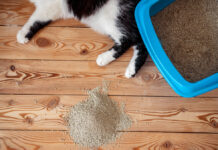Are you struggling with crate training your furry friend? Don’t worry! This comprehensive guide on step by step crate training will help you transform that crate from a scary box into your dog’s favorite den As a dog parent myself, I’ve learned that proper crate training isn’t just about convenience – it’s about creating a safe space your pup genuinely loves
Why Crate Training Matters?
Before diving into the step by step crate training process, let’s understand why it’s important. Domesticated dogs, like their wolf ancestors, are naturally den animals. They seek out cozy, enclosed spaces for security and comfort. That’s why proper crate training can be a game-changer for both you and your furry friend! Check out more helpful dog training tips at Pet like boss and explore their comprehensive dog care section for additional guidance.
Essential Steps for Successful Crate Training
1. Choosing the Right Crate
- Pick a size where your dog can stand, turn around, and lie down
- Consider your pup’s adult size if they’re still growing
- Choose between wire, plastic, or furniture-style crates
- Ensure proper ventilation and sturdiness
2. Location, Location, Location!
- Place the crate in a family area
- Avoid direct sunlight and drafts
- Keep away from heating/cooling vents
- Ensure it’s visible but not in the way
3. Making the Crate Inviting
Following our step by step crate training guide let’s make that crate super comfy
- Add soft bedding
- Include favorite toys
- Place treats inside randomly
- Consider covering wire crates partially for den-like feel
- Never force your dog inside
- Leave the door open initially
- Toss treats near and inside the crate
- Use positive reinforcement consistently
5. Feeding Time Training
- Place food bowl near the crate
- Gradually move it inside
- Start with the bowl just inside
- Eventually place it at the back
6. Building Duration
- Start with short periods (5-10 minutes)
- Gradually increase time
- Use a command like “crate” or “bed”
- Always reward calm behavior
7. Nighttime Training
- Place crate in/near your bedroom initially
- Establish a consistent bedtime routine
- Expect some whining (don’t give in!)
- Take potty breaks as needed
Common Mistakes to Avoid
- Using the crate as punishment
- Leaving your dog too long
- Giving in to whining
- Rushing the process
Advanced Tips for Success
The step by step crate training process requires patience and consistency. Here are some pro tips:
Creating Positive Associations
- Hide treats randomly throughout the day
- Use special toys only for crate time
- Practice during day and night
- Maintain a calm attitude
Dealing with Anxiety
- Start super slow if needed
- Use calming aids if necessary
- Consider professional help for severe cases
- Never force or punish
Special Considerations
For Puppies:
- More frequent potty breaks
- Shorter training sessions
- Extra patience required
- Consistent schedule important
For Adult Dogs:
- May need more time to adjust
- Previous experiences matter
- Focus on positive associations
- Be extra patient
Troubleshooting Common Issues
Excessive Whining
- Don’t reward attention-seeking behavior
- Ensure all needs are met
- Stay consistent with routine
- Consider timing and duration
Resistance to Enter
- Make it more appealing
- Use high-value treats
- Never force entry
- Take baby steps
Maintaining Success
Once your pup is crate trained
- Keep routines consistent
- Continue random treats
- Maintain positive associations
- Don’t overuse the crate
Final Thoughts
Remember, successful crate training isn’t a race – it’s a journey. Every dog is different, and what works for one might not work for another. Stay patient, consistent, and positive throughout the process.
Quick Success Checklist:
- ✓ Right size crate selected
- ✓ Comfortable bedding added
- ✓ Positive associations created
- ✓ Consistent routine established
- ✓ Patience maintained
- ✓ Progress celebrated
Remember to visit Pet like boss for more detailed pet care advice and training tips. They’ve got tons of resources to help you on your pet parenting journey!
Whether you’re dealing with a tiny puppy or an adult dog, these steps will help you achieve successful crate training. Just remember – patience, consistency, and lots of love are your best tools for success!
Happy training!












